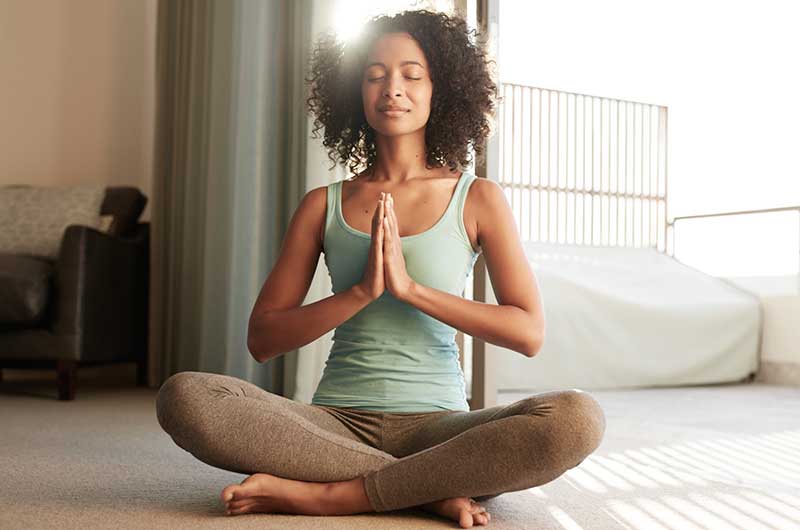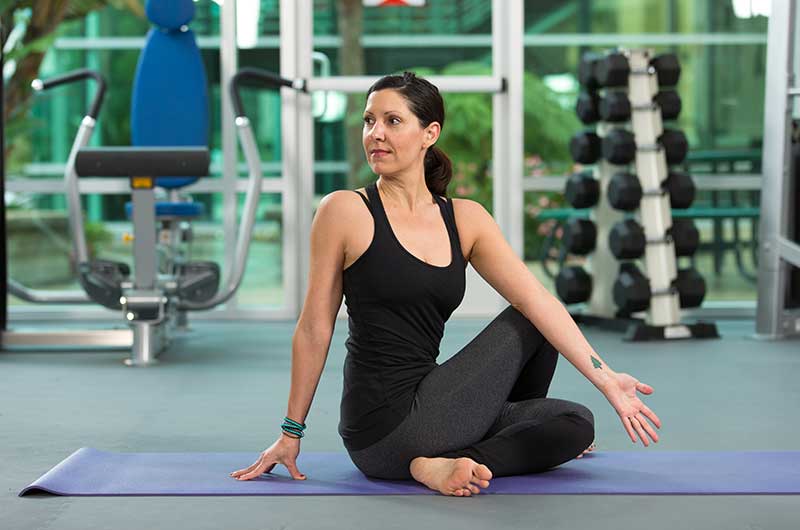It’s estimated that over 20 million people in the U.S. practice yoga, and this number is growing every day. Yoga classes typically combine stretching and poses with breathing techniques, and serve as a wonderful way for people to de-stress and move their bodies. Yet this ancient practice is still often misunderstood.
From reducing stress to lowering blood pressure, many people gravitate toward yoga to combat the effects of a modern day lifestyle. Though yoga has become more mainstream, the way in which yoga is portrayed in the media (think hyper-flexible yogis in seemingly impossible poses) has caused some people to fear or misunderstand this ancient practice. Let’s take a look at seven of the most common yoga myths and realities.

Myth 1—I have to be flexible to do yoga
Reality: Many people think a certain level of flexibility is required to do yoga, when in fact; yoga is the perfect activity for people living in inflexible bodies. Yoga increases the range of motion in our joints and lengthens our muscles. Like any other exercise, it takes time and dedication to gain flexibility. The pictures you see on Instagram of yogis with their feet intertwined behind their heads helps perpetuate the flexibility myth. Rest assured it took those yogis years of practice to be able to finagle their bodies into that pose.
Myth 2—I have to sweat to feel the benefits of yoga
Reality: All types of yoga are beneficial. With the rise in popularity of flow classes and hot yoga, many people believe that yoga has to be extreme in order to reap the rewards. But the slower, gentler classes offer some of the best benefits of yoga—a reduced risk of injury and reduction in stress from moving mindfully and an increased focus on flexibility from holding poses for longer periods of time.
Myth 3—I have to execute the movements perfectly

Reality: Perfection is not the goal of yoga. Alignment is critical in any form of exercise; however, pushing, prodding, pulling or rotating a joint into a specific position may actually do more harm than good. Yoga movements need to be approached mindfully and most importantly, safely. Over time, the alignment and depth of the yoga poses will naturally progress.
Myth 4—Yoga is boring
Reality: There are styles of yoga to suit every individual’s movement preferences. Finding the style of yoga that works best for you is a process of trial and error. Someone who enjoys higher intensity exercise may prefer flow classes more than gentle classes. It’s all about discovering which style, teacher or studio works best for you.
Myth 5—Yoga is a religion
Reality: Yoga does have a spiritual component, but it does not follow one specific religion. The common misperception is that yoga is a Hindu practice. Although yoga’s roots are in Hinduism, yoga has always been open to everyone, regardless of religious or spiritual preference. Most gyms offer yoga as a form of exercise, whereas studios may incorporate spiritual components into their classes such as chanting, yoga philosophy or meditation. Of course, all of these spiritual components are optional, even in studios; students practice in ways that suit them best.
Myth 6—Only slender people can do yoga
Reality: Yoga is for every body. Authentic yoga is nonjudgmental and welcomes every person to come as they are and enjoy the benefits of the practice. Sometimes people struggle to lose weight despite exercise and mindful eating. Chronic stress can be the culprit. Yoga allows the body and mind to relax and the breath to deepen. And people with less stress often sleep better, so yoga can inadvertently contribute to weight loss.
Myth 7—Yoga is expensive

Reality: A self-yoga-practice is one of the most affordable types of exercise, and it can be done anywhere, from your home to a local park. The only equipment needed is a yoga mat. There are plenty of free online videos that will guide you through a yoga class or give you ideas about how to develop a self-practice. Local libraries rent books and DVD’s and many community-based centers offer reduced price, donation-based or free yoga classes.




 by
by 












 by
by